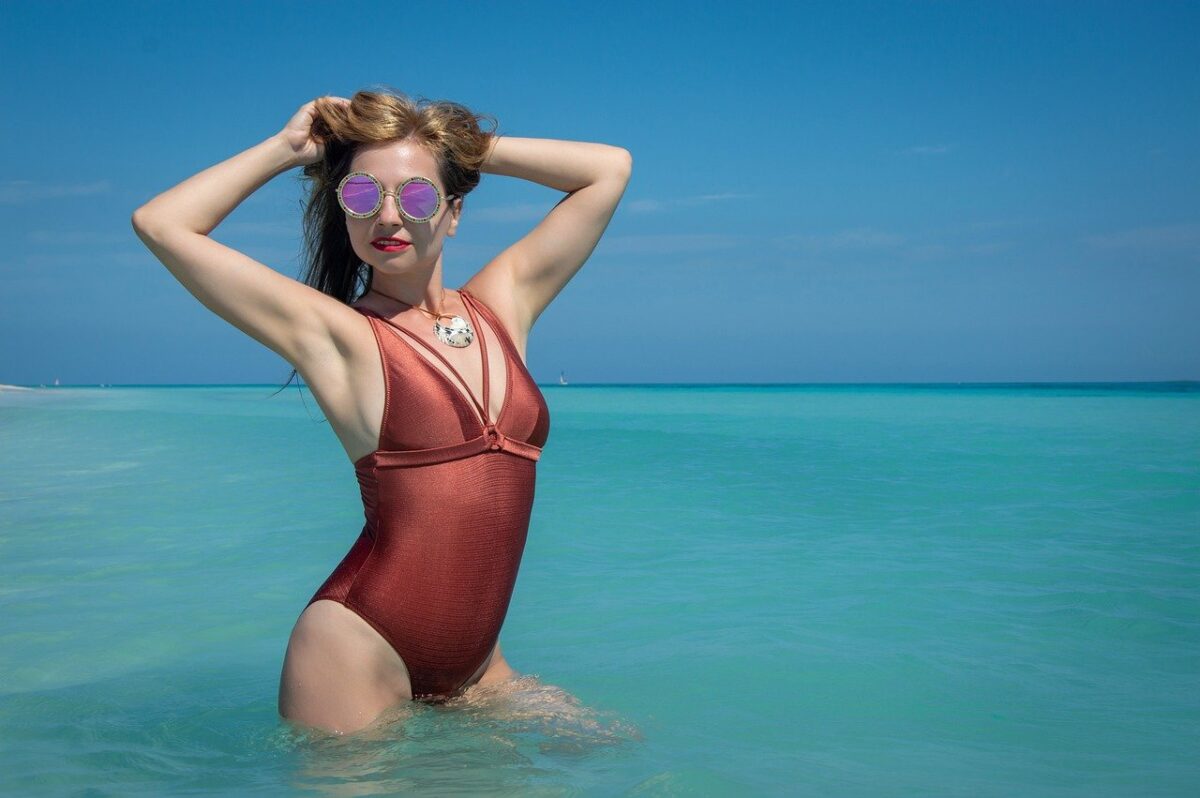I was at the beach when I was invited to a contemporary dance performance that evening. Since I hadn’t brought my leotard with me, I decided to test whether a swimsuit could be used as a leotard.
It turned out to be a game-changer, and the following are some of the benefits you can get from this substitute.
Contents
Can a Swimsuit Be Used as a Leotard?
Yes, you can wear a swimsuit as a leotard since the fabric and design of a one-piece swimsuit is almost like that of a leotard. Unlike leotards, swimsuits come in varying styles and trends, which gives you the flexibility to choose the right style depending on the occasion, support level, and weather conditions.
For instance, if the weather is cold or you just want more coverage, a neoprene one-piece swimsuit can be used as a leotard due to its higher fabric thickness and extra coverage.

Reasons to Wear Swimsuit as a Leotard
Whether you didn’t pack a leotard with you, the weather is cold, or you need more coverage, a swimsuit might be a better option for the following reasons.
Sturdiness
Leotards are not meant to be used in water. Their materials are usually lightweight, delicate, and highly flexible. That means there are chances of ripping if you are wearing a leotard when going for rigorous workouts.
On the other hand, the pressure water exerts on you when swimming and making shallow dives is usually higher than the atmospheric pressure. Swimsuit designers design them with sturdier and rigid fabric to withstand this pressure without ripping.
Likewise, swimsuits are designed to be elastic, which can make you wonder do swimsuits shrink or stretch. The answer is, it stretches when it’s wet, while leotards can’t.
This makes swimsuits a better option when performing intricate movements, jumps, and stretches, as there are minimal chances of ripping.
Modesty
Leotards usually have bright colors and patterns to draw attention to your body. On the other hand, swimsuits are meant to be worn when swimming or sunbathing, so most of them have muted colors.
- A one-piece swimsuit covers the entire torso, including the chest, back, abdomen, hips, and bottom.
- Since leotards usually have a higher-cut leg opening that offers less coverage on the hips and bottom, one-piece swimsuits provide more coverage.
This makes swimsuits a better option if you are self-conscious and want more coverage and less attention.

Thickness
Swimsuits are generally designed to provide thermal insulation and keep you warm in the water. As a result, swimsuits tend to be thicker than leotards, which are meant to keep the skin dry and comfortable, even in hot and humid conditions. This makes swimsuits a better option for cold weather.
Style
A leotard only features a one-piece suit style that covers the torso from the crotch to the shoulder. On the other hand, swimsuits come in various styles, such as swim-dresses, high-waisted bikini thinner, or two-piece like a monokini swimsuit. This allows you to choose the best style depending on the activity.
For instance, if you are going to the gym and are self-conscious of the cellulite on your hips and butt, you can consider wearing a swim-dress swimsuit. Usually, this will allow you to show your body in a flattering way, just like a leotard, without showing the cellulite.
Support
Perhaps you have a fuller bust and engage in high-impact actions like gymnastics. In this case, you might need an attire you can layer with a supportive sports bra to prevent weakening of the breast ligaments and sagging.
A swimsuit is a great alternative as it offers better breast support compared to a leotard. This allows you to layer sports bras and shapewear without the fabric bunching up.
Limitations of Using a Swimsuit as a Leotard
Considering that you will be using the swimsuit for activities it was not designed for, you can expect the following limitations.
- Swimsuits may be less effective in managing moisture during intense physical activities.
- Some dance studios and performances may require you to wear leotards, not swimsuits.
- Wearing additional dancewear may be challenging due to the design of the swimsuit. For instance, you can wear leotards with leggings but with swimsuits, it can be challenging.

Related Questions
Can I Wear a Leotard as a Swimsuit?
The fabrics used to construct leotards may not withstand chlorine or saltwater exposure and may not offer the same comfort and fit as swimsuits. Also, the material may not provide sufficient protection from the harmful sun’s UV rays when sunbathing.
Are There Hygiene Concerns When Using a Swimsuit as a Leotard?
While it’s normal, expect sweat buildup as a hygiene concern when wearing a swimsuit in lieu of a leotard. Swimsuits are designed to be worn in water and may not have the same breathability or moisture-wicking properties as leotards.
When Using Swimsuits as Leotards, Do I Buy the Same Size?
In most cases, you must use the same sizing guidelines for swimsuits as you would for a leotard. However, swimsuits and leotards may have different cuts and construction, affecting the overall fit.
Conclusion
Although leotards are made for gyms, dances, and athletic activities, it doesn’t mean they shine in every twist and turn. As long as you find the right size and style, you can maximize your swimsuit both for swimming and dancing activities.
